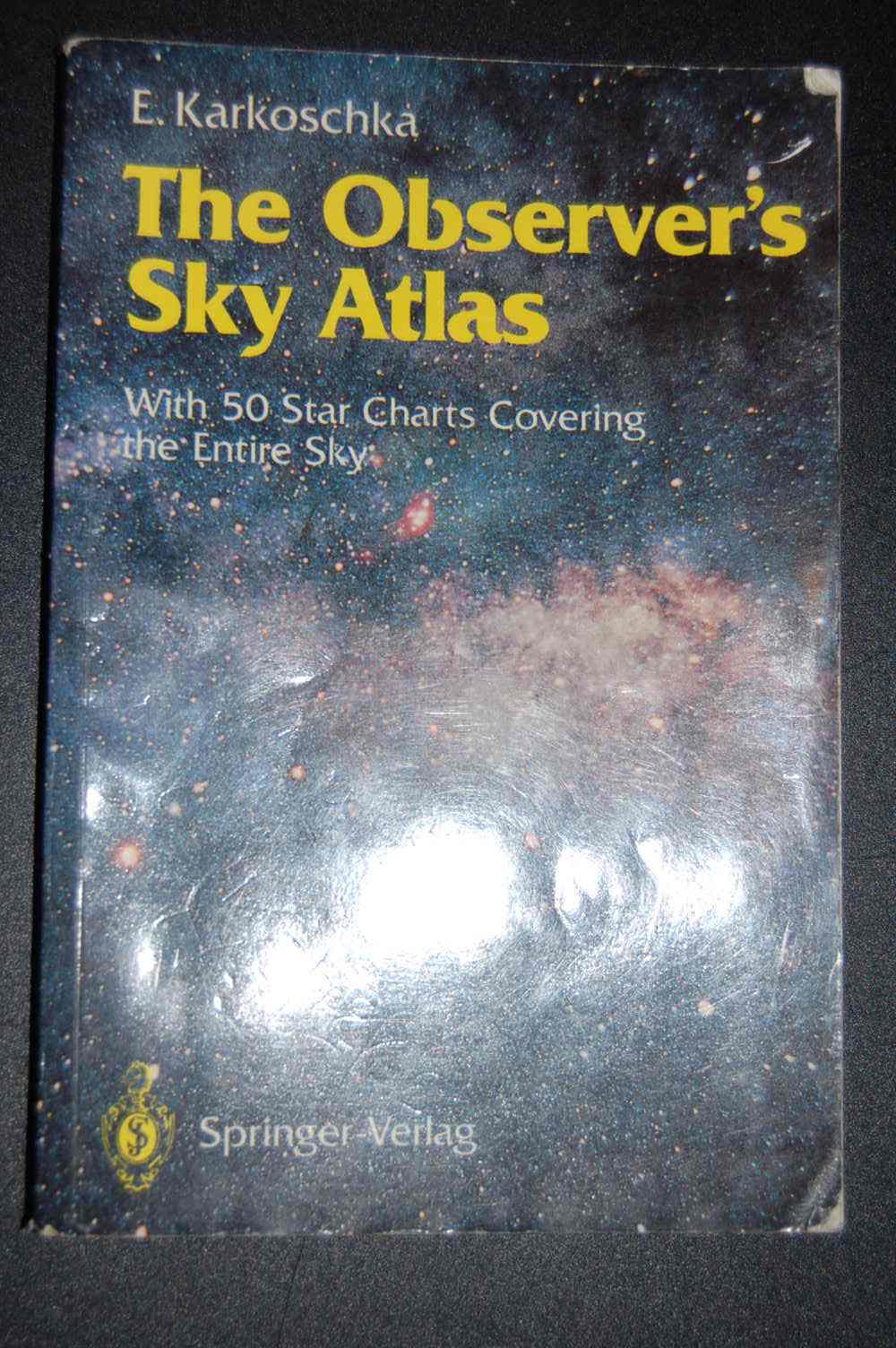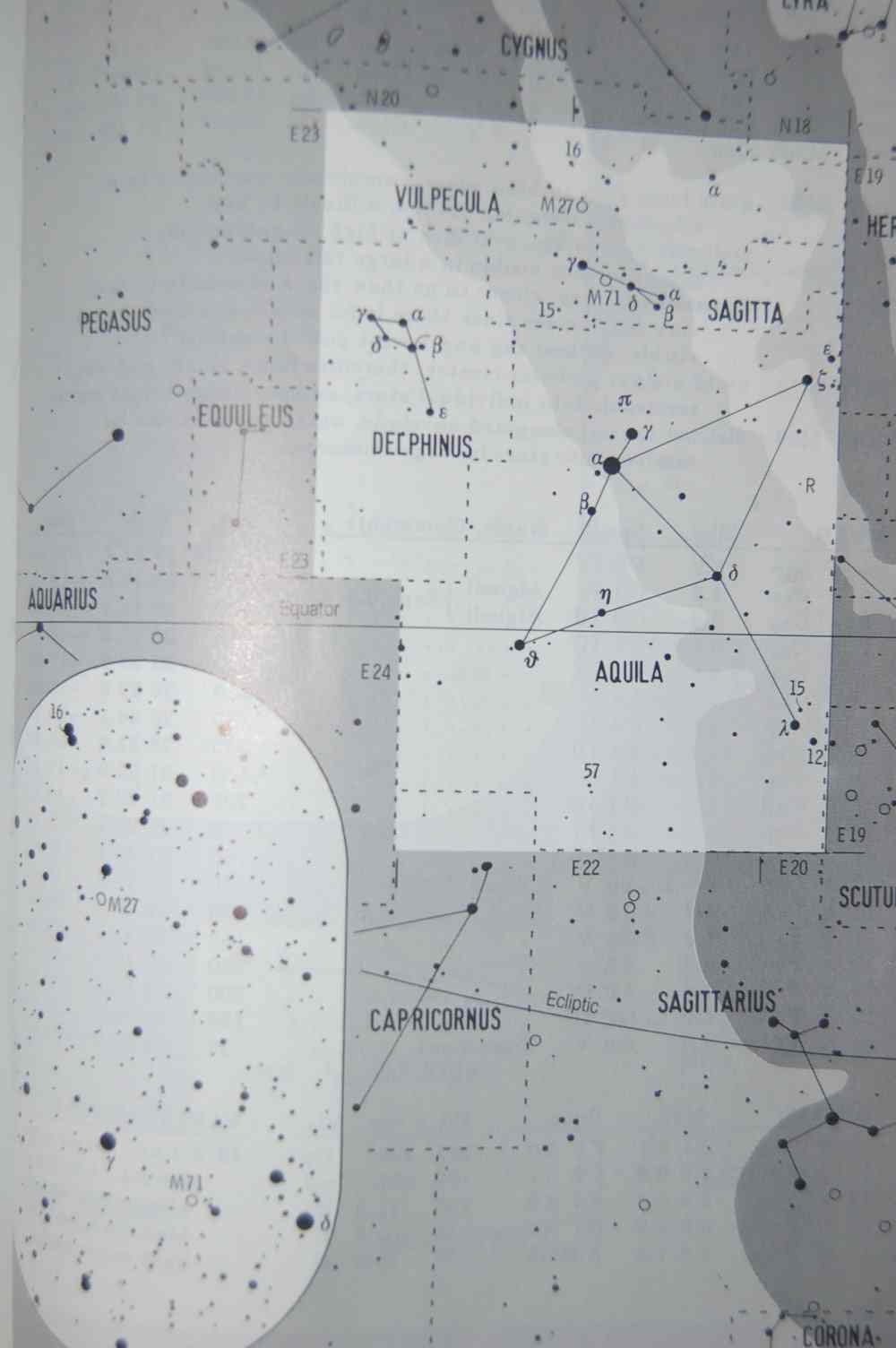Copyright 2008 Starry Mirror



The
TM
Astronomy From West Virginia
BOOK REVIEW - THE OBSERVER'S SKY ATLAS BY ERICH KARKOSCHKA
BRIDGEPORT, WV (S-M) - Here at our little observatory in the foothills of West Virginia, we are constantly in need of reference material. Star atlases, charting software, and giant handbooks are all on hand in case we need to look up an object to find, or to identify something we have happened upon. Although all the fancy software and expensive, thick books have their place, more often than not we find this little book, The Observer's Sky Atlas, by Erich Karkoschka, to be the resource we reach for.
We first saw the book around 1990, when the English version was released. Immediately, we realized what a fine book it is. Though it has just 130 pages and is only 1/4 inch thick, the utility of the book was readily apparent. The charts are very concise and plain, and they do away with all the clutter which many star atlases contain. Although such things as coordinate grids may look nice in principle, when out under the sky with a dim red flashlight, there is no doubt that the plain charts used in The Observer's Sky Atlas are preferable.
The charts seem especially suited to finding objects with a Telrad or similar zero-power finder. In an age when computer-controlled telescopes claim to be able to find as many as 60,000 objects - many of which are completely beyond their capabilities to actually show - we think it is interesting that practically every non-transient object we have ever thought was particularly worth seeing is included in this book's inventory of about 250 nebulae, galaxies, and star clusters.
Each chart appears on a right hand page, and an accompanying page to the left lists deep sky objects, brighter stars, and double stars in their own tables. Common names are included in the tables, as well as estimated distances and the right ascension and declination of each object. Whole-sky reference charts at the back of the book show the area covered by each chart, and its page number.
The book is so easy to use that we believe it is the first book anyone out under the stars should get. The older versions, which are readily available used, have no extra clutter in them whatsoever. Recently, the book has been issued in a new version that includes a section of images of most of the deep sky objects charted in the book. This dubious improvement was perhaps inevitable in this age when it seems no simple, black and white book can be published. Still, the charts in the new version are just as handy as in the old. Our old copy is now well worn but has served us well, and we can recommend this little book as one of the most useful books for the observer of the night sky. - GW

